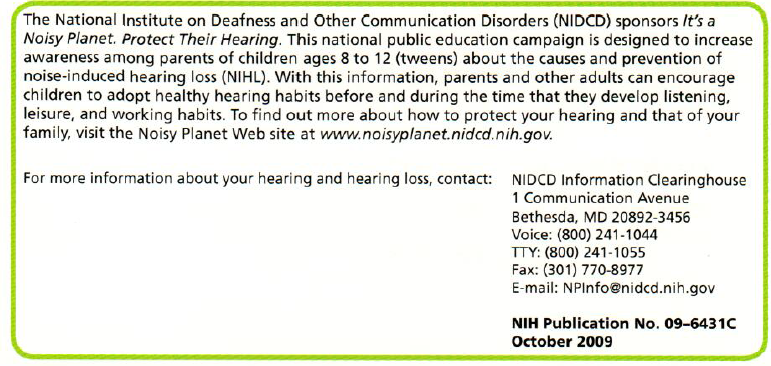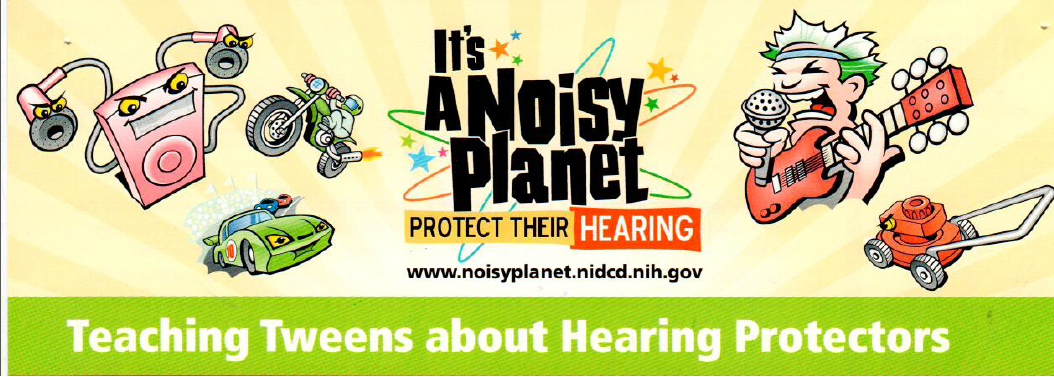Hearing Protection: Children ages 8 to 12, or tweens, are becoming more independent and spending more time without direct adult supervision.
They also ask for a greater say in their activities, music, and clothes. Most important, tweens continue to develop their own attitudes about their health.
Parents and other adults can encourage tweens to adopt healthy habits that will help them protect their hearing for life.
Just as you want your child to wear sunscreen, use a seat belt, and wear a bicycle helmet, you will want him or her to wear hearing protectors against excessive noise.
Here are some suggestions for teaching tweens about hearing protectors so that they reach for earplugs or earmuffs as readily as they do for other protective gear.
- Set clear rules for when hearing protectors should be worn. Tell your child that you expect him or her to wear hearing protectors in noisy environments, even when you aren’t there to supervise. For example, is it time to mow the lawn or is your child going riding on a dirt bike? It’s time for your child to put on hearing protectors.
- Be a good role model. When you are mowing the lawn, using a lead blower, or working with power tools, wear hearing protectors. Consider doing the same at sporting events, amusement parks, arcades, and other noisy places.
- Teach your tween how excessive noise over time can cause noise induced hearing loss (NIHL). Visit the TweenZone on the Noisy Planet Web site at www.noisyplanet.nidcd.nih.gov/tweens to help your child understand the causes and prevention of NIHL.
- Teach your child about noise levels. Point out sources of excessive noise, like the siren of a passing fire truck or ambulance. Guess the decibel level, and look it up when you get home. For a list of decibel levels of common sound, go to the Noisy Planet bookmark at www.noisyplanet.nidcd.nih.gov/staticresources/materials/SoundRulerPrint.pdf.
- Think about buying a small decibel meter from an electronics store and carrying it with you. Or you can download a decibel meter application to some cell phones. You might be surprised to learn the noise levels of public areas or restaurants. In this way, your child will become more aware of excessive noise, where it occurs, and when hearing protectors may be needed.
- Do some research with your tween about NIHL. You and your child may be surprised to learn that some favorite celebrities have hearing loss or a ringing in the ears-call tinnitus- from excessive noise. Some rock and hip hop musicians are encouraging their fans to listen to music at safe volumes and to wear hearing protectors. The Website for Hearing Education and Awareness for rockers or H.E.A.R (www.hearnet.com), has more information about protecting the hearing of musicians and music lovers. If friends make jokes about wearing earplugs or earmuffs, your kid can say, “If (name of musician) wears them, there must be a good reason.”
- Take your tween shopping for hearing protection, either online or in stores. Discuss with your child whether he or she would rather wear earplugs that can be hidden by hair or a hat or make a fashion statement with more noticeable hearing protectors. There are many fashionable, colorful, and comfortable styles of hearing protectors available.
- Choose hearing protectors that fit in with your tween’s daily activities. Add earplugs or earmuffs to your shopping cart when you are outfitting your child for sports or band. Special musicians’ earplugs are available so that your child can play an instrument loudly and clearly, but hear the music at a softer level. There are also hearing protectors designed specifically for hunting or shooting sports. Hearing protectors are available from many pharmacies, sporting good stores, hardware stores, and online companies.
- Learn more about opportunities to discuss hearing protection with your tween. You can find new ideas in the parent tip sheet Teachable Moments about Healthy Hearing at www.noisyplanet.nidcd.nih.gov/parents/moments.
When hearing protectors aren’t an option, other ways to protect your hearing are to turn down the sound or to avoid the noise by walking away.
By teaching your tween about hearing protectors and why and when they are needed, you can empower your child to make smart decisions that can protect his or her hearing now and in the future.

Credit: http://www.noisyplanet.nidcd.nih.gov/Pages/Default.aspx

